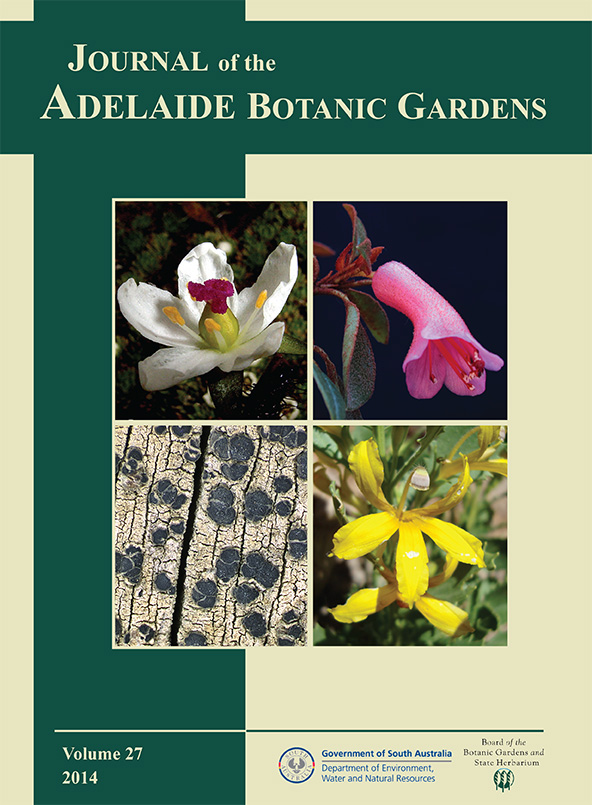 State Herbarium Hon. Associate Bob Baldock from our Phycology Unit provided these photographs of Thuretia australasica.
State Herbarium Hon. Associate Bob Baldock from our Phycology Unit provided these photographs of Thuretia australasica.
This small, red alga was found attached to the stems of a seagrass collected at the Head of the Great Australian Bight in 2010. At first glance the plant appears mundane, even uninteresting.
 But, under the microscope, a delicate mesh of microscopic threads forming the small, hollow, cylindrical plant body is revealed, another example of the surprises awaiting us in the microscopic world. (Note that the white, glassy particles are sand grains trapped in the mesh and not part of the alga.)
But, under the microscope, a delicate mesh of microscopic threads forming the small, hollow, cylindrical plant body is revealed, another example of the surprises awaiting us in the microscopic world. (Note that the white, glassy particles are sand grains trapped in the mesh and not part of the alga.)
 Click here for a detailed description of the species from the online version of Prof. H.B.S. Womersley‘s Marine benthic flora of southern Australia. More images can be found in Bob Baldock’s Algae revealed fact-sheet “Pictured key to some common re-mesh algae of southern Australia” (1.3MB PDF). A detailed colour plate from W.H. Harvey‘s Phycologia australasica is available from the Internet Archive (under the name Thuretia teres).
Click here for a detailed description of the species from the online version of Prof. H.B.S. Womersley‘s Marine benthic flora of southern Australia. More images can be found in Bob Baldock’s Algae revealed fact-sheet “Pictured key to some common re-mesh algae of southern Australia” (1.3MB PDF). A detailed colour plate from W.H. Harvey‘s Phycologia australasica is available from the Internet Archive (under the name Thuretia teres).








You must be logged in to post a comment.